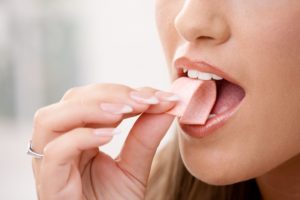A Holistic Dentist in Weyauwega Explains How Oral pH Works
November 6, 2018

Everyone knows that brushing, flossing and visiting a holistic dentist in Weyauwega are the most important steps to take when practicing oral hygiene. Unfortunately, many people don’t seem to take their diet into account when trying to maintain healthy teeth and gums. In fact, many people don’t even see it as an issue, but they are mistaken. The foods and beverages you drink can make a big difference, as well as other habits you should know.
To understand this better, we need to understand the pH scale and how your mouth’s acidity affects your risk of dental disease.
How the pH Scale Works
The pH scale is designed to measure exactly the acidity or basicity of a certain liquid. The scale goes from 1 to 14, 1 being the most acidic (battery acid), 14 being the most basic (lye) and 7 being neutral (water.) This system is not only useful for determining how basic or acidic bottled water is, but also your mouth.
How pH Relates to Oral Health
When it comes to your mouth’s pH, you should be shooting for about a pH of 5.5. Once the pH reaches below 5.5, tooth enamel will begin to dissolve or demineralize as a result of plaque acid exposure. When teeth are no longer mineralizing, it means that the fluoride ions inside saliva are not able to outpace the breakdown of the enamel from acids. When enamel breaks down, it is gone for good because it does not carry any regenerative properties.
The average pH balance in the mouth isn’t exclusively based on the foods and beverages you consume either. For example, adults tend to have more acidic mouths, with saliva averaging about at 6.5. Children’s saliva tends to average at about 7.5, so slightly less acidic than adults.
What Can You Do to Prevent Cavities?
To help you gain a better understanding of what’s going on inside your own mouth, purchase a set of pH strips. To get the most accurate test possible, wait at least 2 hours after eating or drinking to ensure no remaining food consumed alters the results. Cleanse the mouth by filling it with saliva and then swallowing or spitting. Fill the mouth again with saliva and place a small amount of the pH strip inside it. Examine the colors of the strip and use the instructions provided to determine your pH.
To keep your mouth basic, take note of the foods and drinks you consume as well as which oral care products you use on a daily basis. Chew sugar-free gum to keep saliva production high. If you consume items that contain lots of sugar, you’re more likely to have a more acidic pH balance in your mouth. If you suffer from xerostomia, or chronic dry mouth, you’re also more likely to suffer from a lower pH balance.
Looking for ways to build the perfect diet for oral health? Schedule an appointment with a dentist in Weyauwega today!
About the Author
On top of earning his DDS degree, Dr. William J. Twohig regularly takes courses provided by the International Academy of Oral Medicine and Toxicology. He works hard to ensure patients stay informed on how their daily habits affect their risk for plaque and tartar buildup. To learn more about his practice, you can contact him through his website.
No Comments
No comments yet.
RSS feed for comments on this post.
Sorry, the comment form is closed at this time.
